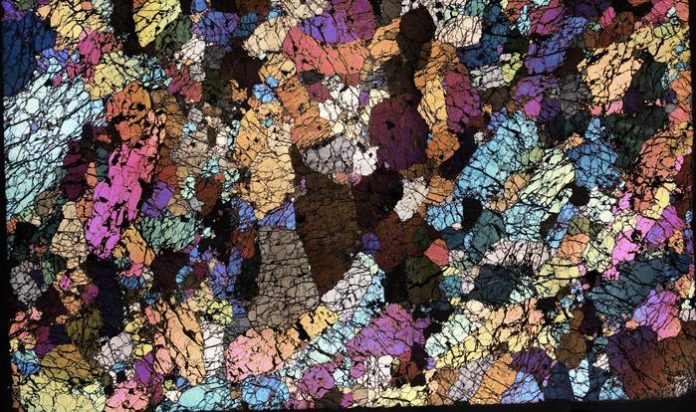
New research reveals continents “peel” from below, feeding enriched material into the oceanic mantle. This process, driven by slow mantle waves, explains why distant ocean volcanoes contain continental chemical signatures, solving a long-standing geological puzzle
Earth scientists from the University of Southampton have unveiled a new mechanism explaining how continental material fuels ocean volcanic activity, far from traditional plate boundaries. The groundbreaking research, published in Nature Geoscience, proposes that the roots of continents are slowly “peeled” away from below and swept into the oceanic mantle, solving a long-standing geological mystery.
Stripping continental roots
The study addresses the puzzling presence of materials with distinctly continental chemical signatures—specifically, high levels of ‘enriched’ elements—in certain ocean islands, such as Christmas Island in the northeast Indian Ocean. Previously, geologists attributed these elements to either recycled ocean plate sediments or deep-seated mantle plumes (columns of hot rock rising from deep within the Earth). However, these explanations often fell short in regions lacking signs of crustal recycling or those appearing too shallow for deep plumes.
Lead author Professor Thomas Gernon of the University of Southampton noted, “We’ve known for decades that parts of the mantle beneath the oceans look strangely contaminated… But we haven’t been able to adequately explain how all that continental material got there.”
Ocean volcanoes: The slow, sweeping mantle wave
The new hypothesis suggests that continents not only rift apart at the surface but also peel from below over vast distances. Researchers developed simulations mimicking the behaviour of continents and the underlying mantle as they are stretched by tectonic forces.
This work builds on their previous discovery that continental breakup triggers a “mantle wave”—a wave of instabilities that sweeps along the continent’s base, disturbing its deep roots 150 to 200 km down. This sweeping movement is incredibly slow, a “millionth the speed of a snail,” gradually stripping fragments from the lowermost continental mantle.
These stripped fragments are then transported sideways, sometimes over more than 1,000 km, into the oceanic mantle. Here, the enriched continental material is incorporated, feeding oceanic volcanic eruptions for tens of millions of years.
Evidence from the Indian Ocean
The team found compelling evidence by analysing geochemical data from the Indian Ocean Seamount Province, a chain of volcanic features formed after the supercontinent Gondwana broke apart over 100 million years ago. Their analysis revealed a burst of unusually enriched magma soon after Gondwana’s separation, a chemical signal that gradually faded over millions of years. This pattern is consistent with the slow flow of peeled continental material, rather than a continuous, deep-seated mantle plume.
“We’re not ruling out mantle plumes, but this discovery points to a completely new mechanism that also shapes the composition of the Earth’s mantle,” Professor Gernon concluded.
This new process highlights the enduring and far-reaching effects of continental breakup on the structure and chemistry of the Earth’s mantle, reshaping our understanding of plate tectonics and volcanism.










